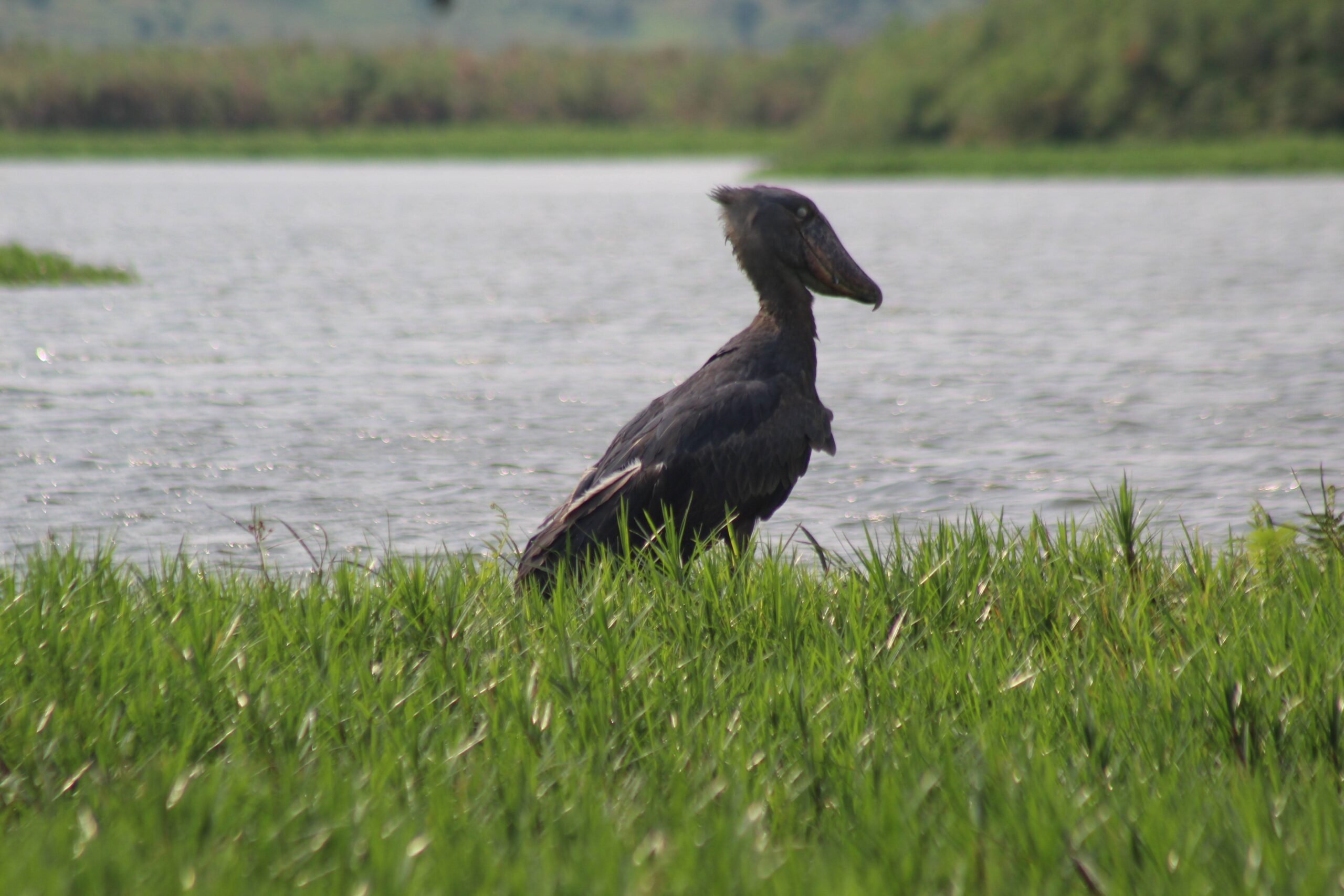MABAMBA WETLAND-Leading spot for Shoebill Sightings
MABAMBA WETLAND-Leading spot for Shoebill Sighting
Uganda is home to over 1060 bird species and of these the most sought-after bird is the prehistoric shoebill bird. Mabamba wetland is one of the places that lead in convenience and sightings of this bird. The wetland is located west of Entebbe town on Lake Victoria. It covers 2424 hectares with marshland, wetland grass, and the other side of the mainland is mainly savannah around Nkima Forest.
Mabamba Wetland is a Ramsar site and one of the 34 Important Birding Areas (IBAs). The wetland boosts with 260 bird species and hosts 7 of the 12 Lake Victoria basin biome species in Uganda the famous one being the Papyrus Gonolek. Mabamba wetland also attracts migratory birds from Europe and other places and these can be seen from October to March.
The Shoebill bird has intertwined features, some out of the normal proportion like its big bill with a hook that looks like a battered shoe, heavy and broad wings, greyish feathers, and long legs. Visitors who are even not bird enthusiasts are always delighted to see this bird. The Shoebill feeds on most lungfish and other creatures that survive in water and marshy areas like tadpoles, water snakes, and other life.
Mabamba Wetland is a major fishing point for locals and before 2006 when it was set as a Ramsar site, the numbers of the shoebill bird here were deteriorating because of some myths. Fishermen here had superstitions that once you see the bird before going out fishing, it was bird omen. They would hunt down the birds and kill them, almost leading to their extinction at the wetland. The protection of the wetland and community sensitization has rose the hope of survival of the bird and now fishermen cooperate with the birding site management. They now even earn from renting out boats, helping track the bird, and informing the guides where they have seen the bird when out fishing, some have even been trained to guide and identify birds.
Shoebills lay about 4 eggs and only raise one chick. This makes their numbers very small and at Mabamba now, there are about 12 birds.
Birding at Mabamba Wetland is always highlighted by the shoebill and it starts early at around 7 am before busy fishing activities on the lake. Motorized canoes are used and they go through the water trails surrounded by thick and tall wetland vegetation before getting to the open waters.
Some of the other species at Mabamba Wetland include the Papyrus Gonolek, Ashy Flycatcher, House Sparrow, Flappet Lark, Mosque Swallow, Weyn’s Weaver, White-shouldered Tit, Sand Martin, Brown Snake-Eagle, Eurasian Hobby, Grosbeak Weaver, Blue-headed Coucal, Fork-tailed Drongo, Feral Pigeon, Long-Crested Eagle, Striped Kingfisher, Common Stonechat, Common Greenshank, Little bee-eater, Whinchat, Grey Wagtail, Great Blue Turaco, Grassland Pipit, Orange Weaver, Northern Brown-throated Weaver, Tawny-flanked Prinia, Black-headed Weaver, Slender-billed Weaver, Yellow-backed Weaver, Black Headed Gonolek, Ruppell’s Long-tailed Starling, Grey-Headed Sparrow, Spur-winged Lapwing, Yellow Wagtail, African Pied Wagtail, Pied King Fisher, Grey-headed Kingfisher, Yellow-Billed Stork, Olivaceous Warbler, Tawny Eagle, Carruther’s Cisticola, Ross’s Turaco, Fan-tailed Widowbird, Rufous-napped Lark, Yellow-throated Greenbul, Common Squacco Heron, White-faced Whistling-duck, Fulvous Whistling-duck, Goliath Heron, Slender-billed Gull, Spur-winged Goose, Long-toed Lapwing, African Marsh Harrier, White-browed Coucal, Violet-backed Starling.
Getting To Mabamba Wetland
The Wetland can be accessed from Entebbe or Mpigi town. A ferry from Nakiwogo Landing Site in Entebbe gets you to the road where you can drive about 20-30 minutes before getting to the site. Alternatively, a 56km drive from Kampala to Mpigi and then branch off to Mabamba.


